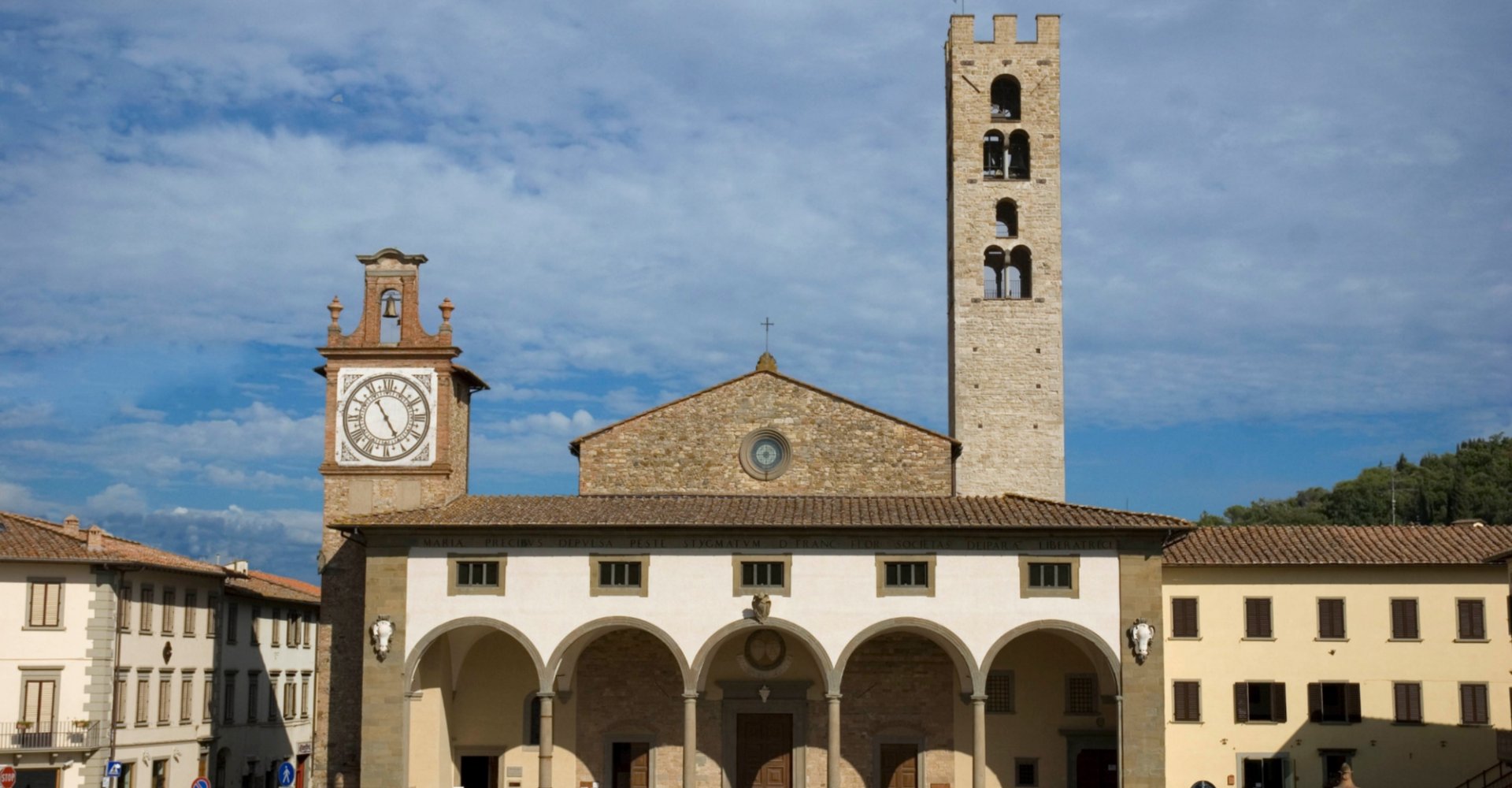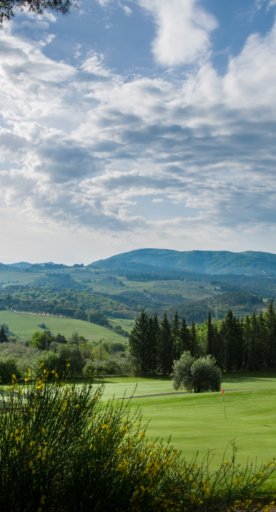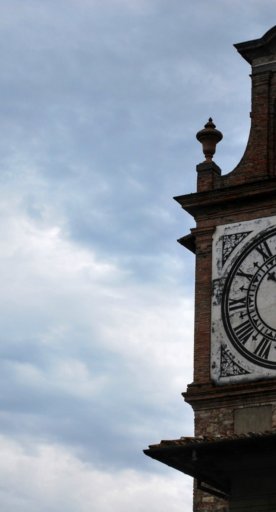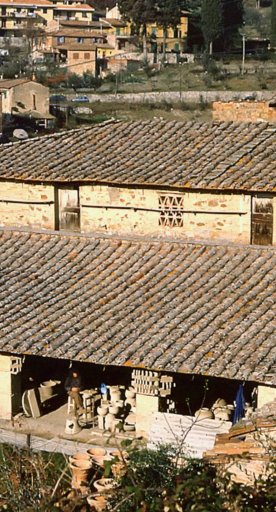Basilica of Santa Maria in Impruneta
The church is home to a sacred image of the Virgin Mary, the origin of what is maybe the main Marian religious centre in all of Tuscany
The origins of the Basilica of Santa Maria in Impruneta are surrounded by legend. It owes its foundation to the miraculous discovery of a sacred image of the Virgin Mary.Legend has it that when the decision to build a temple in honour of the Virgin Mary was made, the walls that were erected during the day were destroyed during the night. The stones were then loaded onto a cart and when the oxen stopped pulling and knelt down, they began to digand that is where the sacred image was found. This story is taken from a 15th-century low-relief attributed to Pasquino da Montepulciano,which is used as an iconographic prototype for all the engravings dedicated to the Virgin Mary. The Impruneta Madonna is still at the centre of a popular ritual, and the church is probablythe oldest of the Marian sanctuaries in Italy.
The interior of the church,with a single nave marked by four stone altars, has a late 16th-century appearance. At the entrance, on the left, there is an elegant marble holy-water fontdonated by the Compagnia dei Tavernieri e Cuochi di Firenze in 1542. Beyond the baptistery, on the first altar on the left, you can admire the painting of TheCalling of Apostles Peter and Andrew, a work by Jacopo Chimenti (1606), and on the second altar on the left, there is The Martyrdom of St. Sebastian, thought to be by Matteo Rosselli (1578-1650).Further on, there is the small Temple of the Virgin, built after the model in Santissima Annunziata, and based on designs by Michelozzo, Pagno di Lapo Portigiani and Maso di Bartolomeo. The Robbian works which adorn it, by Luca della Robbia, are delicately decorated. The altar of the Madonna has a silver ciborium at its centre depicting the discovery of the Holy Image.
The main altar is decorated with a polyptych depicting the Madonna and Child with Saints.
The little temple to the right of the altar was dedicated to housing the Blessed Sacrament: at the centre of the tabernacle there is a representation of the crucifixion by Luca della Robbia, between St. John and a holy bishop (Saint Romulus or Saint Zenobius). In the adjacent choir there is a magnificent golden bronze grill decorated with emblems of the passion, created in 1636 by Cosimo Merlini the Elder, the Grand Duchy’s goldsmith. In the first chapel on the right there is a bronze crucifix on the altar, attributed to Pietro Tacca(1577-1649). On the two altars on the walls on the right side of the nave are the paintings The Nativity of the Virginby Domenico Cresto, known as il Passognano, dated 1602, andThe Martyrdom of St. Lawrence, attributed to Cristofaro Allori (1577-1621).
Accessibility information: feelflorence.it



